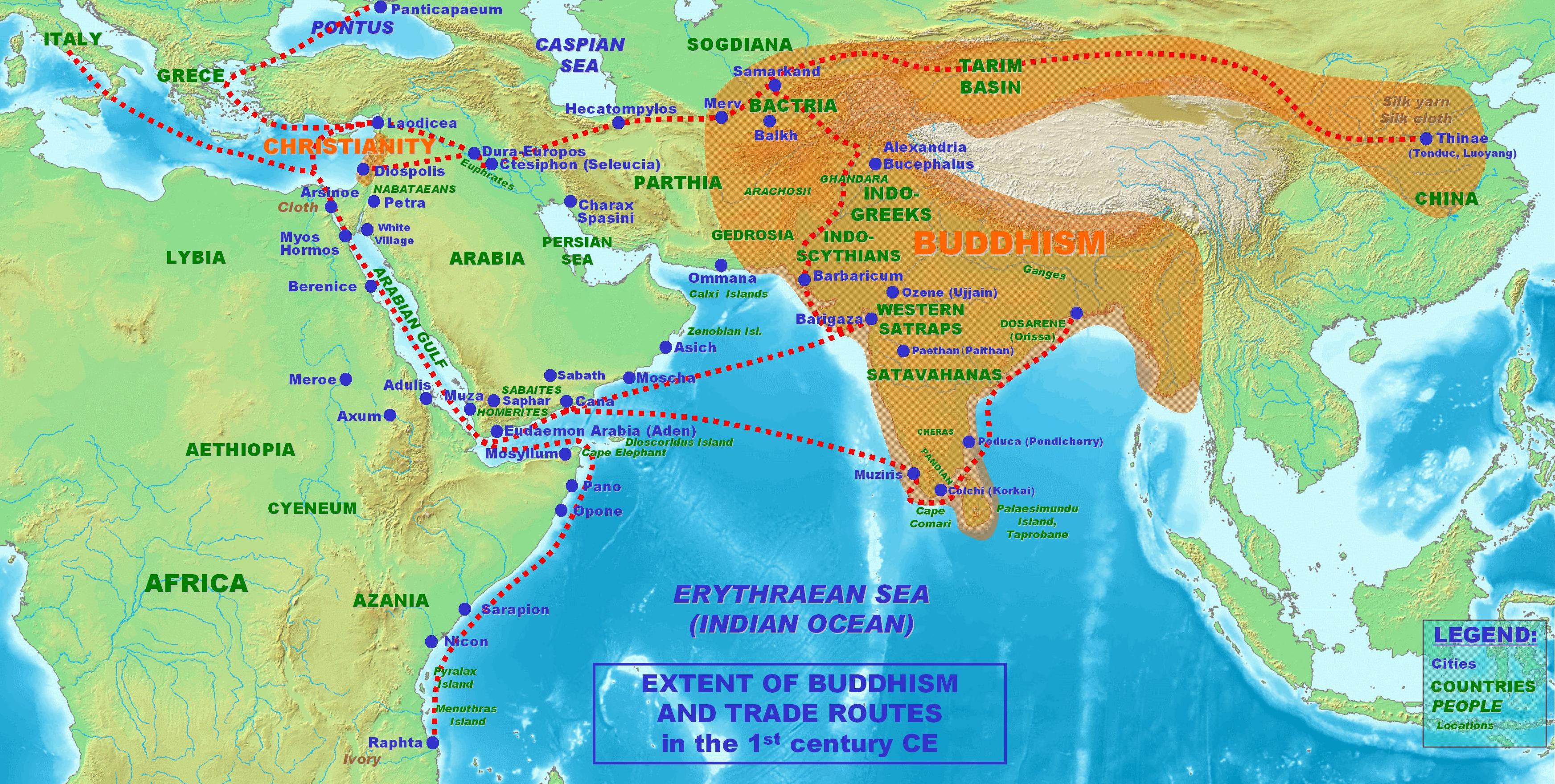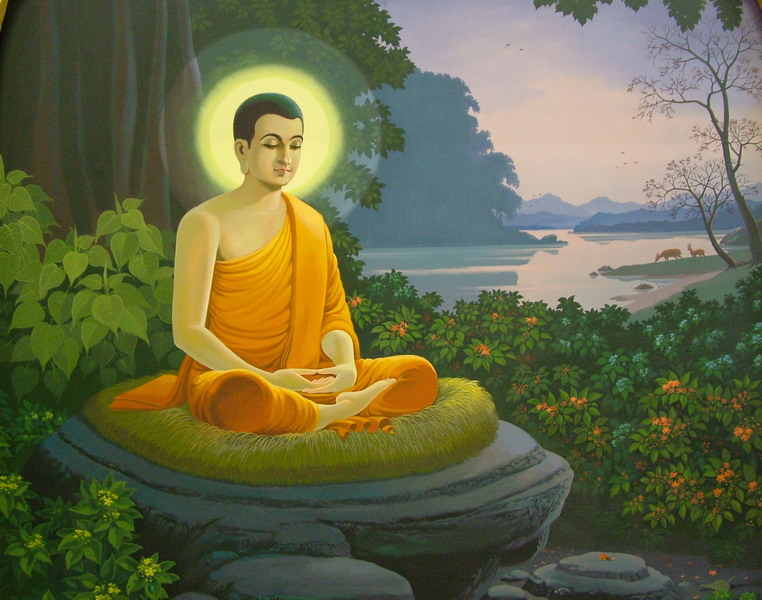
The Three Jewels:
The Sanskrit term "triratna"
(or tiratna in Pāli) literally means "Three Jewels". In Buddhism the
Three Jewels (or Three Treasures) refer to the Buddha, The Dharma (the Buddha's
teachings) and the Sangha (the community of monks and nuns, or more generally
the community of Buddhist practitioners). The name of this domain
"triratna.info" reflects the contents of this website, information
about Buddhism, not just one of the yānas (see below) but all of Buddhism. At
present this website presents information about one aspect of Buddhism which
everyone can understand and relate to - historical facts, people and their
interconnections with one another. At present this site is organized according
to various Buddhist "transmission lineages". In addition to lineages,
historical, chronological, linguistic, and geographical resources relevant to
the study of Buddhist history are provided. Later, attempts will be made to
fill in more details - such as personal biographies, doctrinal explanations
etc.
What is Buddhism? The Three Turnings of the Wheel of the
Dharma:









 7:14 AM
7:14 AM
 mr.vam
mr.vam

 In the mid-1970s Vipassana was first tried within
a prison environment with two 10 day courses being conducted for jail officials
and inmates of a prison in Jaipur in the Indian state of Rajasthan. Despite the
success of those courses, no further jail courses were conducted in India for
almost 20 years. In 1993 a new Inspector General of Indian prisons, Kiran Bedi,
was appointed and in the process of trying to reform the harsh Indian penal
system, learned of the earlier Vipassana courses. She requested that additional
courses be conducted in the largest prison in India, Tihar Jail outside of New
Delhi. The results were dramatically sucessful. Based upon the success of these
courses, another course was conducted in April 1994 by Goenkaji and a number of
his assistant teachers for over one thousand inmates of Tihar prison with wonderful
benefit for all of those who participated.
In the mid-1970s Vipassana was first tried within
a prison environment with two 10 day courses being conducted for jail officials
and inmates of a prison in Jaipur in the Indian state of Rajasthan. Despite the
success of those courses, no further jail courses were conducted in India for
almost 20 years. In 1993 a new Inspector General of Indian prisons, Kiran Bedi,
was appointed and in the process of trying to reform the harsh Indian penal
system, learned of the earlier Vipassana courses. She requested that additional
courses be conducted in the largest prison in India, Tihar Jail outside of New
Delhi. The results were dramatically sucessful. Based upon the success of these
courses, another course was conducted in April 1994 by Goenkaji and a number of
his assistant teachers for over one thousand inmates of Tihar prison with wonderful
benefit for all of those who participated.
 The word Philosophy is Greek for
"love/pursuit of knowledge", but for Socrates philosophy is so much
more than that. Socrates does not merely love knowledge. For Socrates knowledge
is a way of life, in fact, the only way. When faced with the opportunity to
escape death on the condition that Socrates quit "philosophizing",
Socrates would rather die. Socrates also mentions that people should not fear
death since they don't know what it will be like. This shows that Socrates mind
is always open to new possibilities. In Socrates time, many people simply
believed what they were told, but Socrates did not just accept any answer.
The word Philosophy is Greek for
"love/pursuit of knowledge", but for Socrates philosophy is so much
more than that. Socrates does not merely love knowledge. For Socrates knowledge
is a way of life, in fact, the only way. When faced with the opportunity to
escape death on the condition that Socrates quit "philosophizing",
Socrates would rather die. Socrates also mentions that people should not fear
death since they don't know what it will be like. This shows that Socrates mind
is always open to new possibilities. In Socrates time, many people simply
believed what they were told, but Socrates did not just accept any answer.

 Translate
Translate
